In 1946, the United States Railroad system had about 3,950 interlocking systems and signal towers in service throughout the country. Almost every one was manned 24/7, and had one operator or more to handle the traffic.
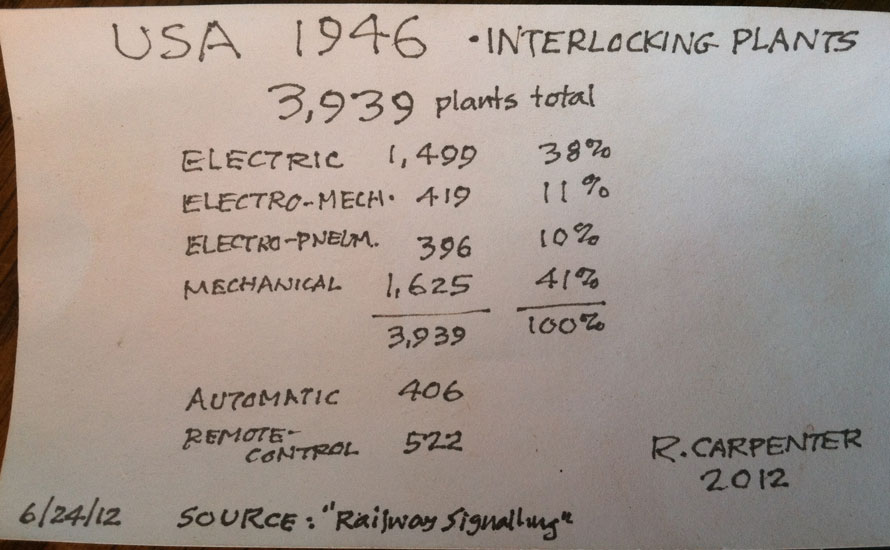
Towers were a critical part of railroading’s infrastructure. Most readers of The Trackside Photographer had favorite towers on their local railroads, and often befriended the operators if they were lucky enough to be invited “upstairs” to see the machine’s operation, listen to railroad stories, and of course watch some trains. A number of us who learned about Towers this way eventually became Tower Operators. One of them was me.
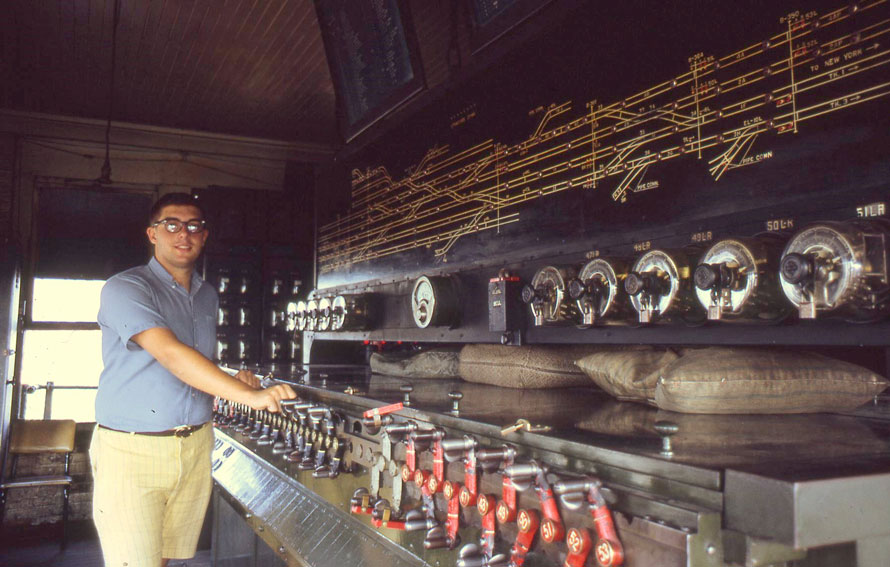
My earliest railroad memory was of my grandfather walking me to a bridge over the New York, New Haven, & Hartford Railroad. I was four years old, but I can still remember reaching the bridge and peering through the chain link fence in anticipation of seeing a headlight, which usually belonged to a short local train on the outside track. If I waved, the engineer almost always blew the whistle! Sometimes I got lucky, and delighted in spotting an express on the inside track appear in the distance, pulled by a classic New Haven green and gold electric engine. Next stop 125th Street, then Grand Central Terminal.
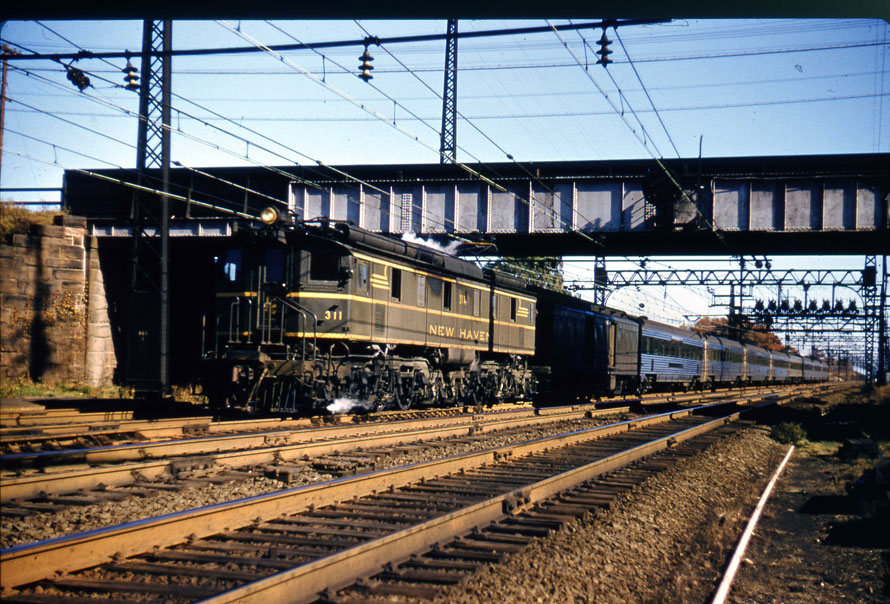
Fast forward to high school and countless trips on the New Haven to Manhattan, which always filled me with eager anticipation of another train ride. I would stay glued to the window, watching the stations and towers fly by. I soon learned where all the towers were, and set a goal of one day working as a New Haven towerman.
After several summers commuting to clerical jobs in New York, I became friends with several NH crew-members. One asked me, “If you’re so interested in trains, why don’t you get a job on the railroad”. Eureka!
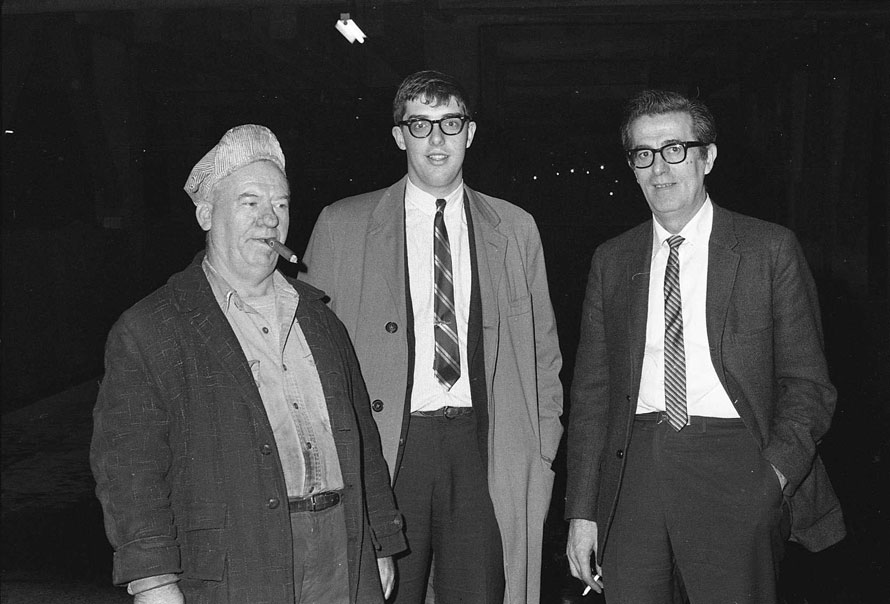
The summer of 1967 was a very good year. The railroad was hiring, and I landed a relief ticket clerk’s job at Stamford, the New Haven’s busiest station. I worked vacation relief for the regular ticket clerks, made more money than ever, and got a foot in the door with the railroad. Before returning for senior year at college, the Ticket Agent gave me the New Haven’s Book of Rules, with orders to memorize it during senior year. And so I did.
Our pay was $2.65 per hour, with extra $0.02 to operate the circuit panel controlling the 11,000 volt energized electric wire catenary. That was a lot of money at the time.
Two days after graduation in June 1968, and almost exactly 50 years ago, I reported to the Dispatcher’s office in New Haven, where I announced I was ready for the Book of Rules exam—on my first day. This earned me several over-the-eyeglasses smirks and comments. But, I HAD memorized the Rule Book, and so I aced the test.
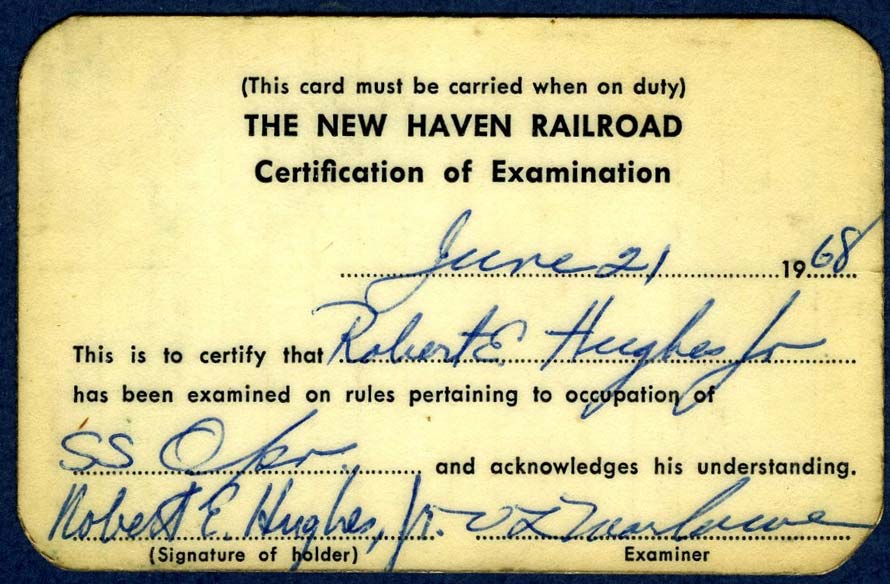
The next day I reported to Stamford Tower for “posting” first trick, with eighty-eight trains between seven a.m. and three p.m. Stamford was the terminal for the local commuter trains, and an important stop for express trains to New York, Washington, New Haven, Providence and Boston. The single track, manual block, New Canaan Branch provided variety, with yard tracks mixed in to the four track electrified main line. Stamford Signal Station (S.S.) #38’s fifty-six lever interlocking machine, built in the 1910’s, worked as smoothly as the day it was new, and enabled us to move the trains safely, and on time.
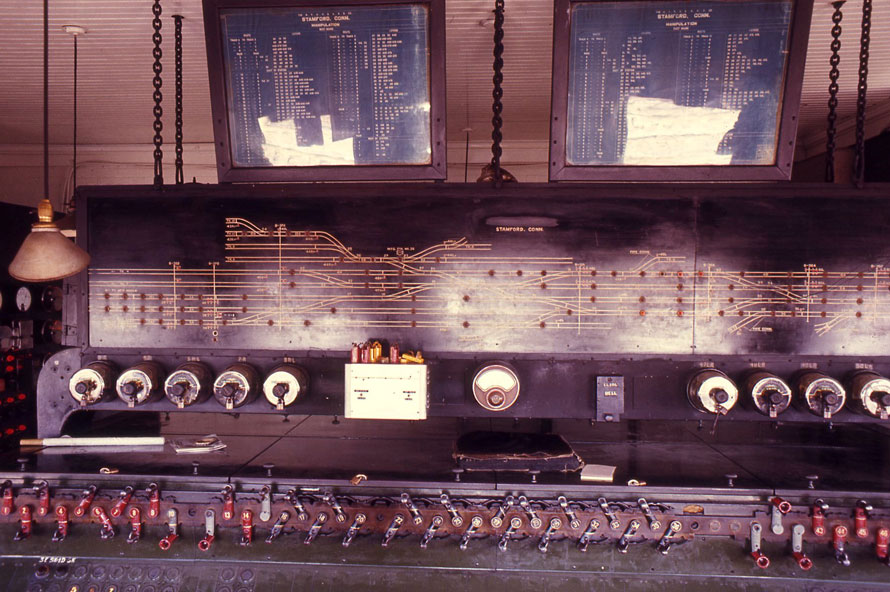
The next Tower to the east was S.S. 44, South Norwalk, built in the 1880’s. S.S 44’s interlocking machine was a sixty-eight lever “Armstrong” machine. The three-story tower building is built very close to Track 4. In addition to the four track electrified main line, the Norwalk operator handled manual block Danbury branch trains, the locking controls for S.S. 45, the four track swing drawbridge over the Norwalk River, and train orders and instructions issued by two dispatchers; one for the west end between Norwalk and Mt. Vernon, and another for trains between Norwalk and New Haven, and the Danbury Branch. Our pay was $2.65 per hour, with extra $0.02 to operate the circuit panel controlling the 11,000 volt energized electric wire catenary. That was a lot of money at the time.
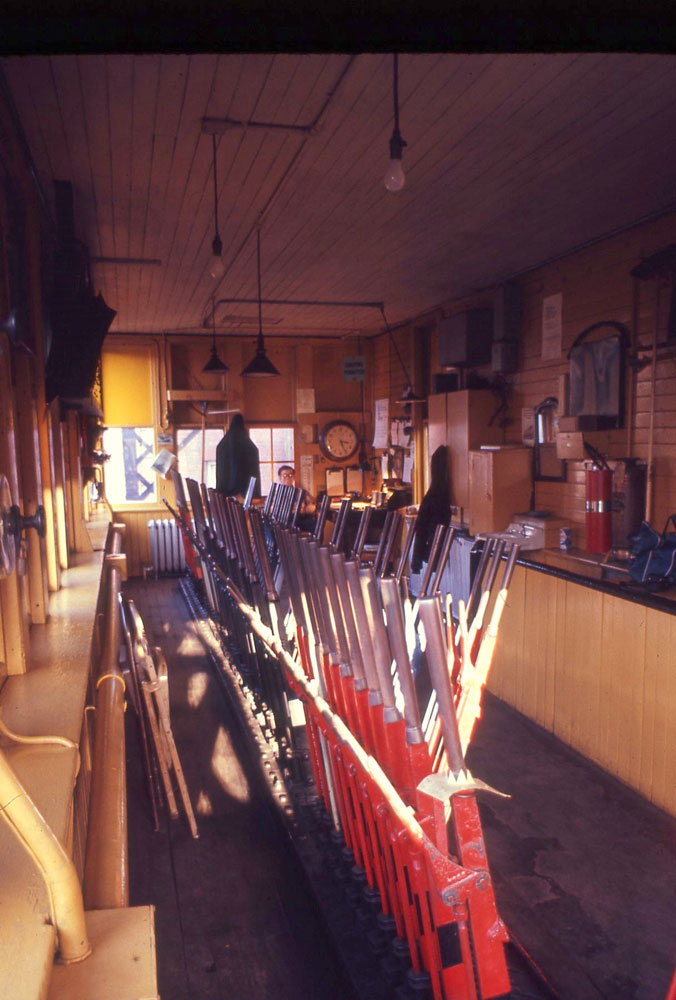
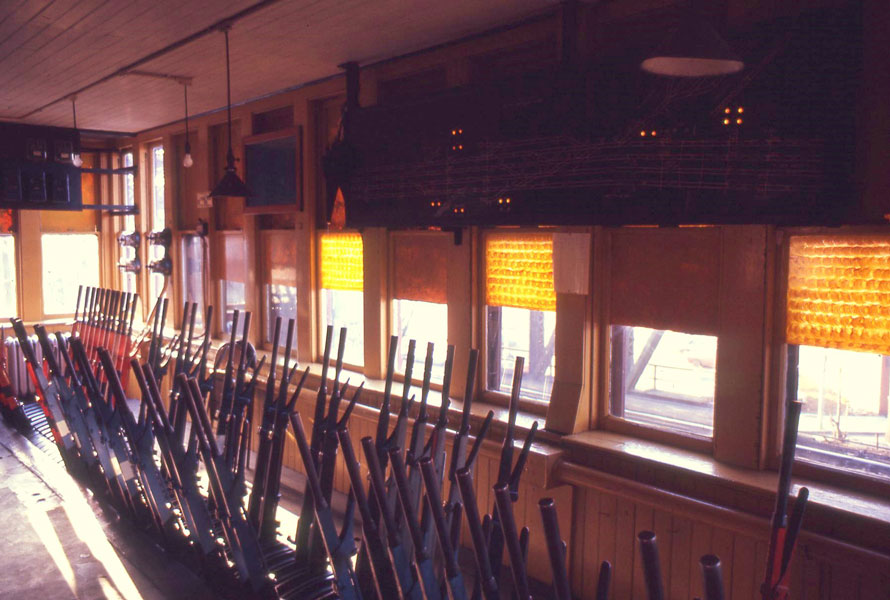
My regular job was the Stamford/Norwalk relief, covering days off for the operators at both towers. For the new kid this provided a lot of variety and chance to learn. Most days were familiar, routine, and with the trains mostly on time. Weather always provided excitement, with summer heat waves, thunderstorms, hurricanes, winter blizzards, and dreaded ice storms to deal with.
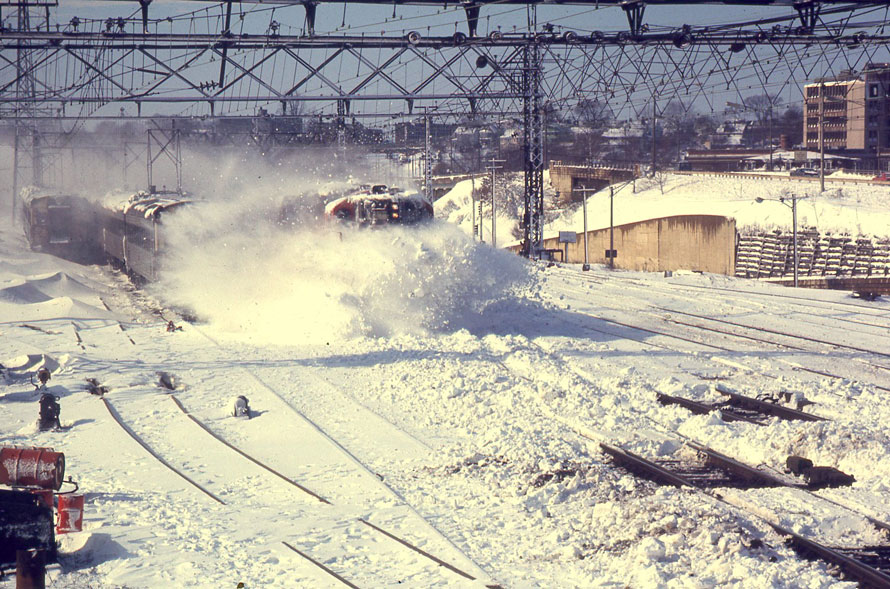
During my years as a towerman, most days were uneventful. One exception was an August evening in 1969, when a head-on collision on the New Canaan Branch killed three NH employees and a trespasser riding with the engineer. The cause was a train order meet the engineer forgot.
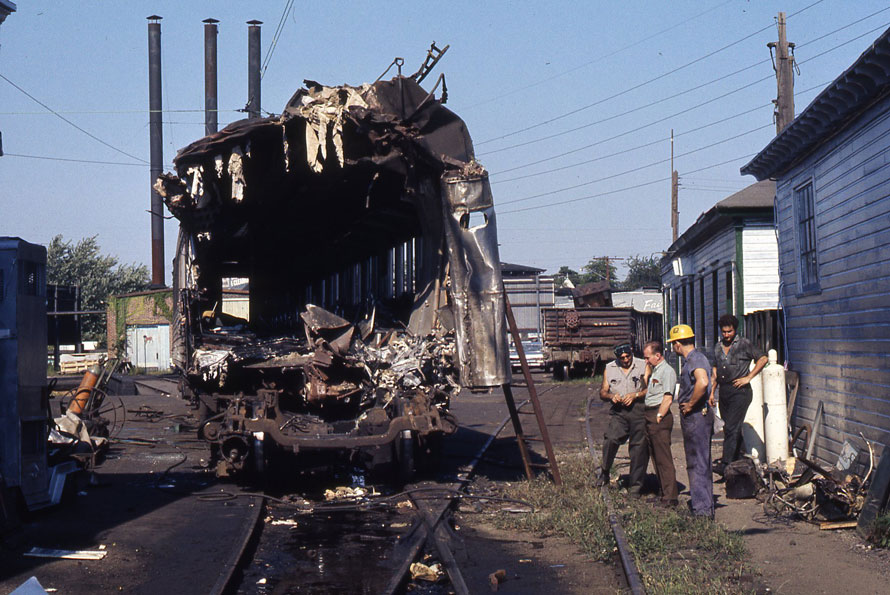
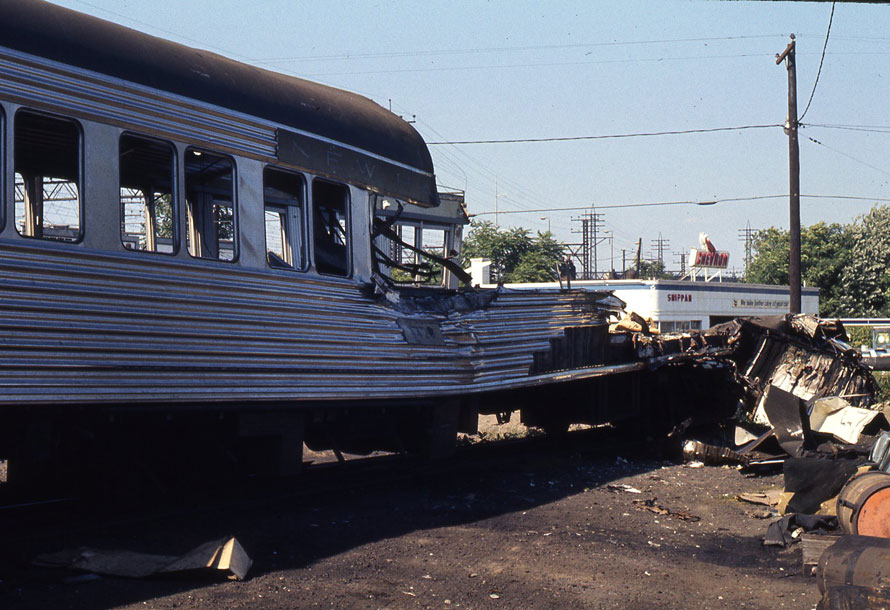
The Rule Book had been “written in blood”, but if you followed the rules to the letter, you were fine.
By the mid 1970’s major change was imminent. All stations had new high level platforms installed. The original catenary wires were upgraded to a new high speed design. The signal system was entirely overhauled with modern cab signaling, new switches and interlockings, and the inevitable closings of the towers as signal operations were centralized in New York at Grand Central Terminal.
Signal Station 44, Norwalk tower, remained operational until the 1980’s. After being retired and scheduled for demolition, the local Western Connecticut Chapter of the National Railway Historical Society (NRHS) decided to rescue, repair, and restore the building and interlocking machine. Happily, Metro North, the City of Norwalk, and State of Connecticut were all supportive of the historical restoration.
Most of the restoration work was done by NRHS WestConn Chapter members and others with an interest in railroading. The finished tower was rebuilt with new windows, flooring, heat and air conditioning. The interlocking machine was kept in place, with the model board, levers, and controls operating “as intended”. Today, more Amtrak and Metro North trains than ever run right outside the tower window. Just like the old days.
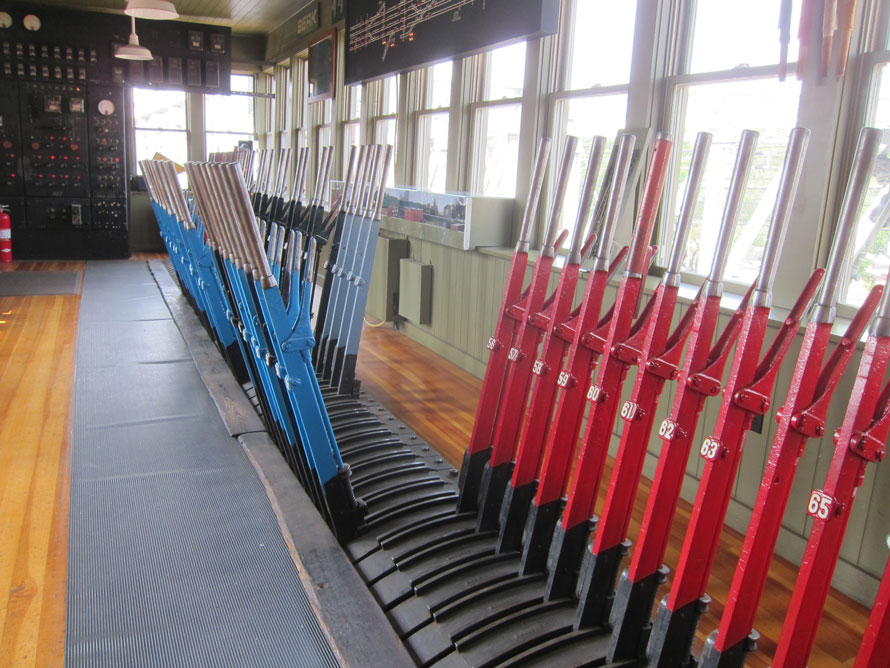
I volunteer as a docent at the SONO Switch Tower Museum as often as I can on summer weekends between May and October. Today, too many people have never been on a train, and even fewer know what a railroad tower was, or how it worked. Visitors are invariably amazed by this 100 year old mechanical machine, which, like all the others around the world, made railroading safe and efficient.
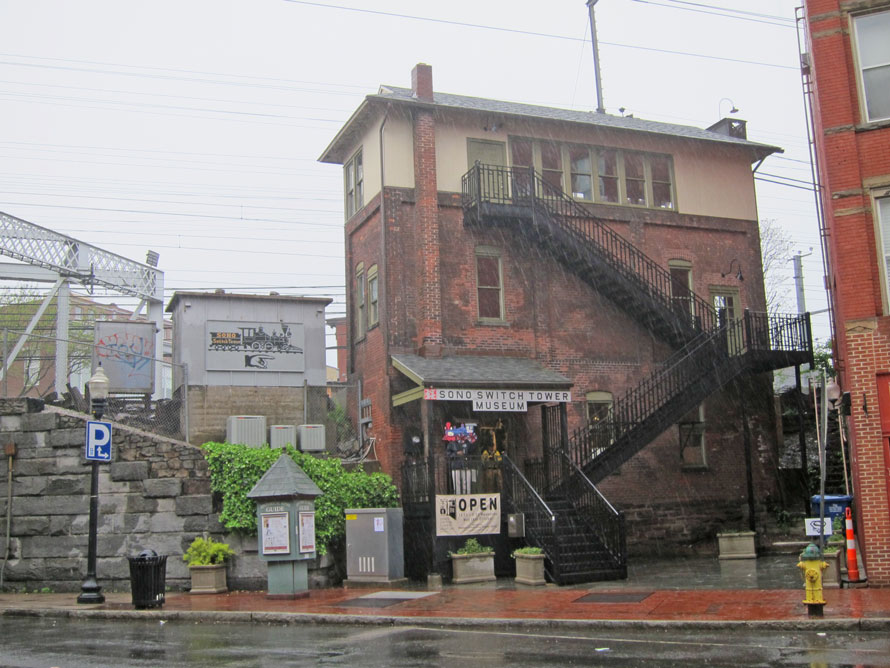
The lessons I learned 50 years ago at Stamford and Norwalk were about communications, logistics, making priorities, scheduling and working with others on the railroad. Train and engine crews, track department staff, electric traction staff, station workers, and others were all dependent on how well the Tower Operator did the job. Life and death decisions were made based on what the Operator said. Trains departed and arrived on time only if the Operators were doing their jobs, always “By the Book” and without compromising safety.
Today the towers are closed, and dispatching is handled by centralized computer centers handling thousands of miles of railroad. Gone are the hand waves from the towerman to the brakeman in the caboose confirming that the train has been visually inspected and everything is in order. Gone is the satisfaction of “making a move” that keeps the trains on time with no delays. Gone is the pride of ownership for a job well done.
It was a lot of responsibility, a little different every day, and sometimes a little boring on quiet weekend evenings with few trains around. But boy, I’ve never had a job that was so much fun.
Bob Hughes – Photographs and text Copyright 2018
Note: SONO Switch Tower Museum is open to visitors summer weekends from noon to 5:00 pm. http://www.westctnrhs.org/tower.htm
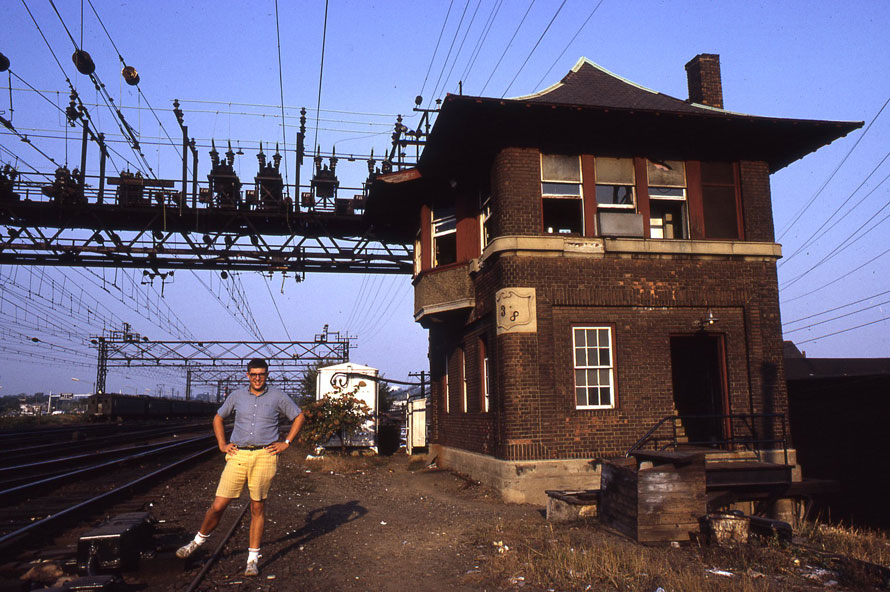
I found this very interesting to say the least. I myself worked some at Stockton Tower on the Santa Fe main line
Where the SP and WP would cross us and Sacramento Northern. We had no electric overhead lines. Most of ours was Santa Fe fast Freight’s going to Chicago or the San Francisco Bay Area. We did have the San Francisco Chief and the Golden Gates passenger trains. The California Zepher crosses here along with SP San Joaquin Daylights.
They tore this Tower down about 20 years ago or so.😢.
Started out with the LIRR in 1969, as an extra Block Operator. The LIRR still had extensive manual block portions, and a large freight operation. In the course of my career, I moved up to Asst. Chief Train Dispatcher, Train Dispatcher, Chief Train Dispatcher, and finished up my final 8 years as a Supervisor-Train Movement/Mgr. Train Operations, at PSCC. Retired in 2001.
I left the NH in 1974 to join the LIRR as a planning analyst, then management trainer for the engineering department. So we were both LIRR employees at the same time. I later left for the magazine production business for 32 years before retiring in 2008. Always wished railroading had worked out for me, but I still have many friends and memories of railroading “back in the day”. And it was the Best Job in the World!
Thanks for sharing your experiences.
Bob, very nice bit of writing. That must’ve been a lot of fun, even with all that responsibility. Those “armstrong” plants are wonderful.
Thank you for sharing your knowledge, memories and photos. I never saw an operating tower so I appreciate the view that you’ve given of that time.
Steve, thanks for the comment; been following your work from Western Canada for some time. Nice work!
Well done!
Fabulous article! You should come up to Toronto and take in the three Toronto Terminals Railway GRS interlocking operations at Union Station before they’re gone.
I would love to, Greg, but hopefully the railroad (GO?) will take video of the operations to preserve them for future fans who will only be able to read about towers and how they worked.
Towers, block stations and train order offices were my favorite places to visit on the railroads. They were wonderful places to learn railroading and and I enjoyed stopping in and visiting with the operators. Many of them were long time friends. I don’t think there are any such left in the U.S. One of my favorites was Port Morris Tower (“UN” on the telegraph call). It was on the DL&W’s main line where the NJ Cut Off and the “Old Road” split. It used compressed air to operate the switches. Bob Mohowski
Excellent story, Bob Hughes! Almost all of us fans of a certain age spent hours and days in towers, hosted by friendly operators, and we would not trade those memories for anything.
Bob Mohowski: My father took me to UN as a very small boy, circa 1969; his high-school student Richard Boylan made some movies there, now available at https://www.youtube.com/watch?v=_ccTad2wsv8. As I recall, a towerman named Ray hosted us; did you know him?
In more recent times — in fact, two weeks ago — a friend and I visited Tower A-2 at Western Avenue in Chicago, where the C. & N.W., Milwaukee, and Pennsy’s Panhandle all converged and crossed; quite a place, with once upon a time more than 20 diamonds and/or double-slip switches! I’ve got two pictures of the Union Switch & Signal model board and interlocking machine posted on my Web site, including https://www.wheresteamlives.net/railroad-hardware?lightbox=dataItem-j9n01cw76 — Oren B. Helbok
Oren, appreciate the compliment! I’ve seen your work on the Center for Railroad Photography, where you have some amazing images at Where Steam Lives. Thanks for sharing the site.
Thanks for the education and explanation about the towers. I always wondered about them when I traveled on trains many years ago. I was intrigued by some towers that had an oriental character in their design and I wondered what went on inside. Your photos and story are fine work. Thank you.
What a wonderful story of a boy who’s imagination was sparked by his grandfather and then, of a young man who pursued his passion on his own initiative. So enjoyed photography and essay.
Bob, I worked alongside you several times while you were at SS38 or SS44 and I can state as a fact that you were an excellent railroader. I knew that if you were working the next tower or even the same trick my job would be easier that day because you were always on top of every situation. I went into management in 1974 and worked in Philadelphia, Boston, Washington, DC and Chicago before retiring with over 46 years of railroad service AND I know for certain that the experience I gained while a Tower Operator was extremely beneficial throughout the later years of my career. I met a great many very good railroaders over the years, men and women who were very sharp and you would certainly make the list. CJ Demotses, Tarpon Springs, FL
Carl, I remember you well, thanks for the compliments! Contact me directly at bhughes914@gmail.com if you wish, I can update you on the 50 years since those fun days, with photos to prove it. Great to hear from you. Bob Hughes, Warren, RI.
Nice story and photos Bob. It’s hard to believe that it has been 50 years since you and I worked together in the New Haven Railroad Signal Towers. For those who want to read and learn more, a book titled “The Classic Railway Signal Tower” is available on the Internet and from the SoNo Switch Tower Museum [ http://www.westctnrhs.org/giftshop.htm ]. The book has much information and many photos, and Bob Hughes was a contributor.
Steve McEvoy
New Haven Railroad Tower Operator Roster Date July 17, 1965.
Since the interlocking towers are gone….does one person control a bigger area/ system with computers
Everything is pretty much controlled from a central location on Madison Ave in NYC
I remember this tower well. My dad worked third trick at the Stamford tower from the 70’s through the 90’s, and at the Norwalk tower before it was turned into a museum – he was invited to the grand opening and was presented with a brick from the building. I spent many nights at work with him, learning to throw the switches before I fell asleep on the machine behind the track board.
I am amazed at how well preserved the tower machine is in the photographs, when were these photos taken?